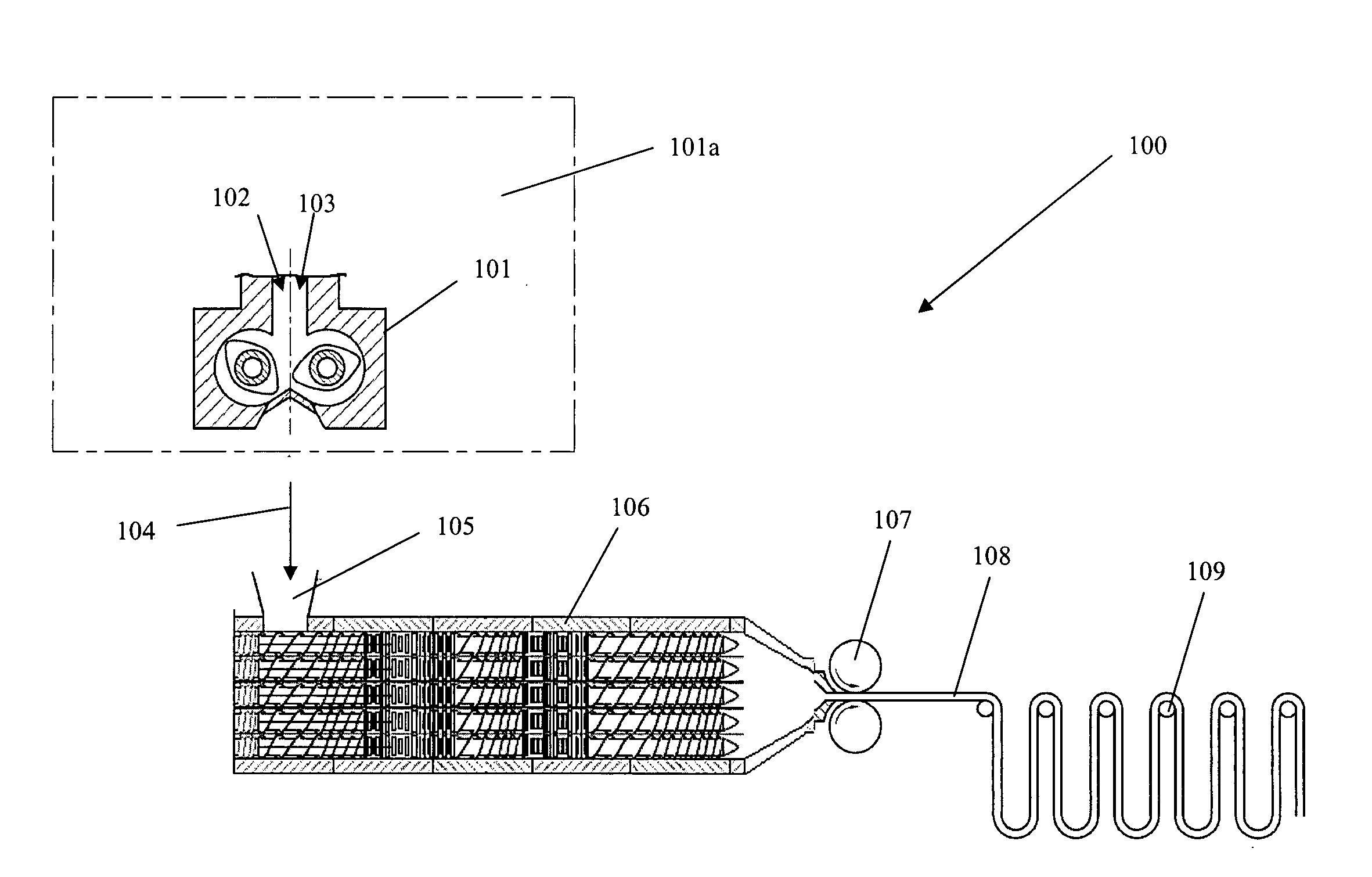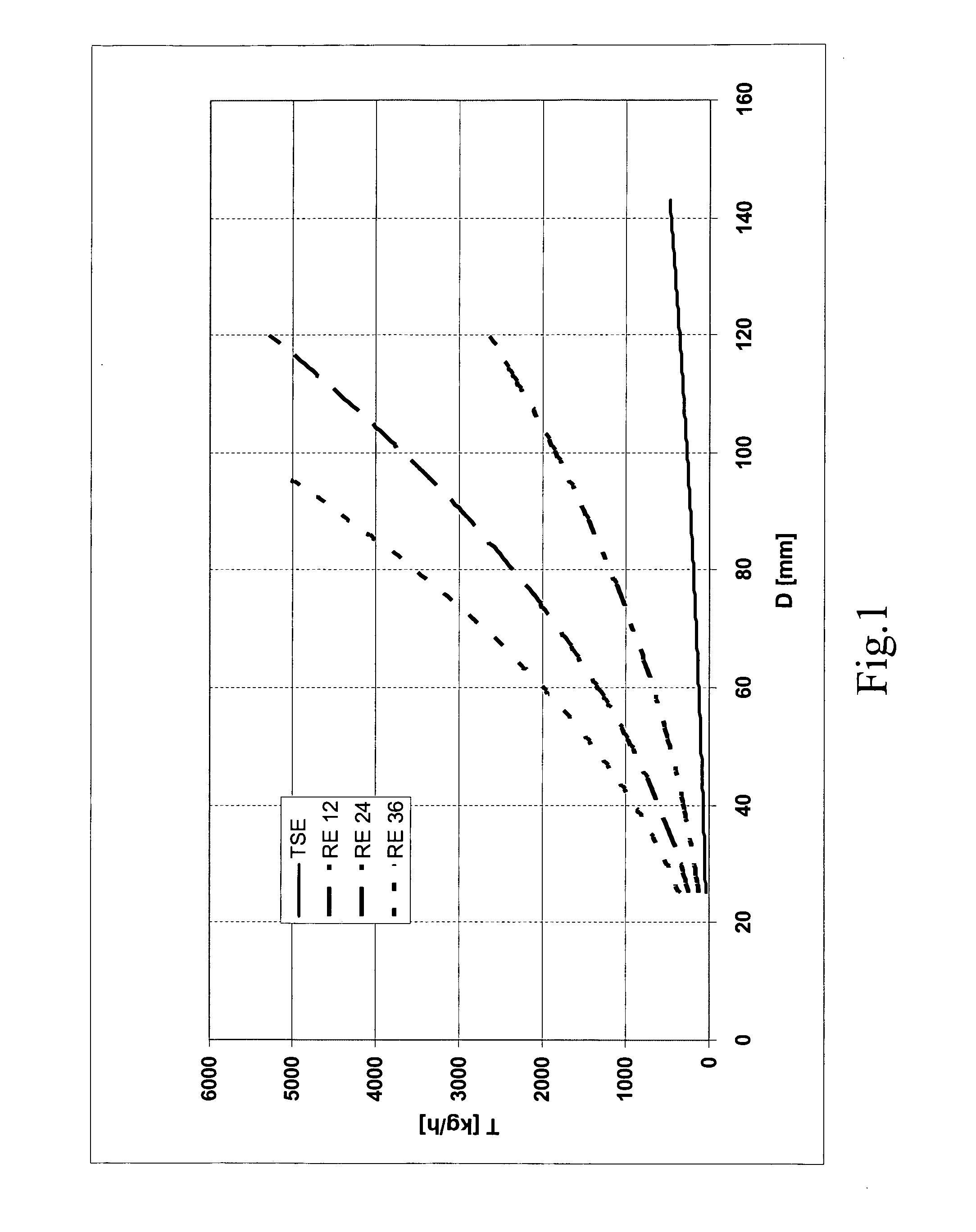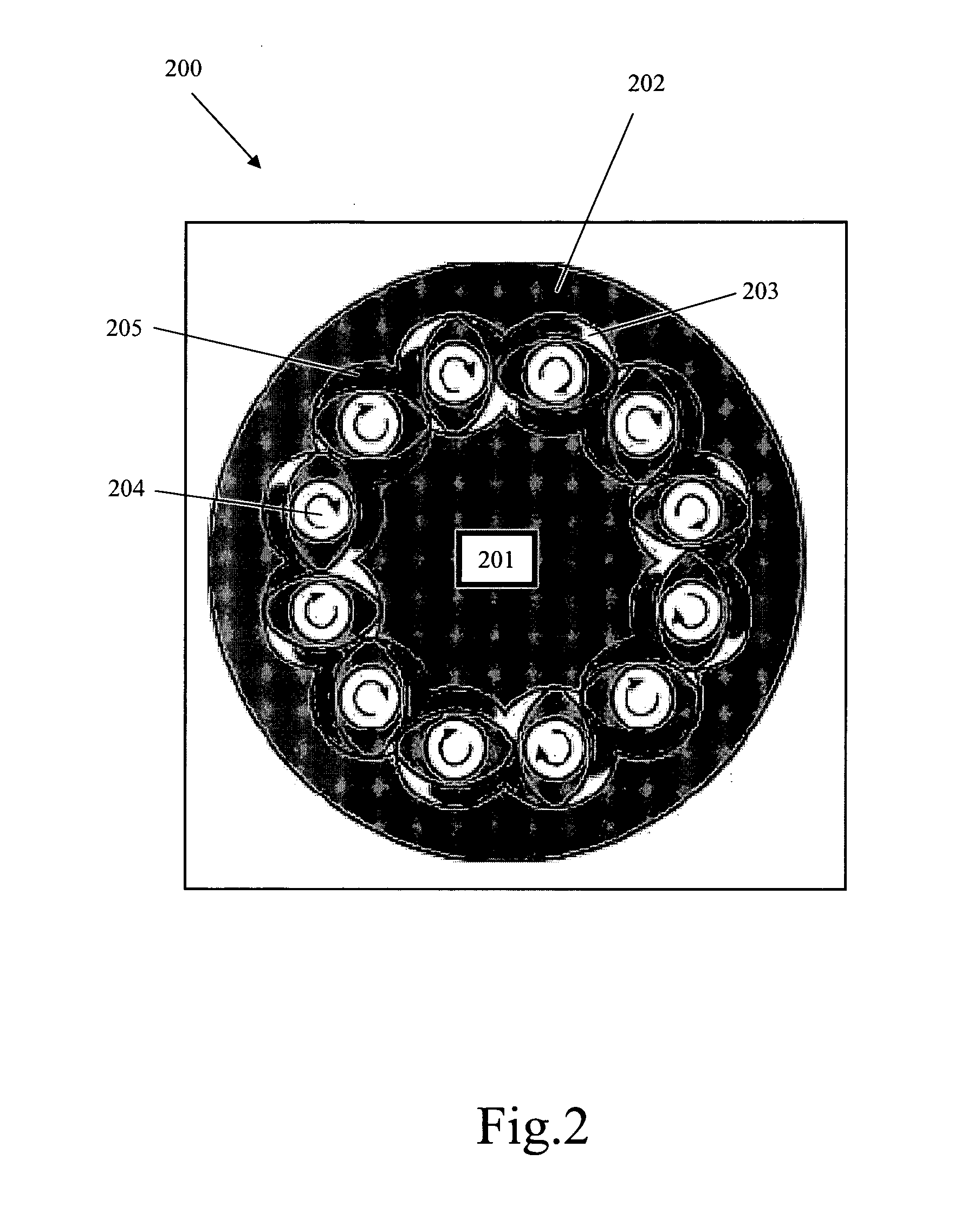Process and plant for producing tyres
a technology of tyres and elastomeric compounds, which is applied in the direction of tyres, belts, other domestic articles, etc., can solve the problems of poor dispersion of reinforcing fillers, poor quality of elastomeric compounds, and poor mechanical properties of elastomeric compounds, so as to achieve good dispersion of ingredients
- Summary
- Abstract
- Description
- Claims
- Application Information
AI Technical Summary
Benefits of technology
Problems solved by technology
Method used
Image
Examples
examples 1-2
Preparation of the Elastomeric Compounds
[0173]The recipe of an elastomeric compound exemplarily prepared by the Applicant is given in Table 1 (the amounts of the various components are given in phr).
TABLE 1COMPOUNDPhrNR70BR30N32655Zinc oxide5.0Stearic acid2.0Antioxidant2.0Resorcinol1.0HMMM2.0Sulfur5.5PVI0.1DCBS1.0NR: natural rubber (STR20 - Taiteck Rubber);BR: polybutadiene (Europrene Neocis ® BR40 - Polimeri Europa);N326: carbon black;Antioxidant: phenyl-p-phenylenediamine (6-PPD - Akzo Nobel);HMMM: hexamethoxymethylmelamine;PVI (retardant): N-cyclohexylthiophthalimide (Santogard ® PVI - Flexys);DCBS (accelerator): benzothiazyl-2-dicyclohexylsulphenamide (Vulkacit ® DZ / EGC - Lanxess).
[0174]Two elastomeric compounds having the above recipe were prepared as follows and tested on laboratory scale machines.
example 1
Comparative
[0175]The elastomeric compound was prepared by using a two-step conventional mixing in a Banbury® mixer.
1st Step
[0176]All the components listed on Table 1, except sulfur, retardant (PVI), hexamethoxymethylmelamine (HMMM) and accelerator (DCBS), were mixed together in a Banbury® mixer (model F270), operating at the following working conditions:[0177]feeding: 225 kg;[0178]temperature: 30° C.;[0179]mixing time: 200 seconds;[0180]fill factor: 73%;[0181]rotor speed: 40 rpm;[0182]discharge temperature: 155° C.
2nd Step
[0183]The elastomeric compound obtained in 1st step was cooled to room temperature (23° C.) and subsequently fed to the same Banbury® mixer above disclosed and a further mixing was carried out operating at the following working conditions:[0184]feeding: 200 kg;[0185]temperature: 30° C.;[0186]mixing time: 130 seconds;[0187]fill factor: 65%;[0188]rotor speed: 40 rpm;[0189]discharge temperature: 105° C.
[0190]The obtained elastomeric compound was subsequently cooled to...
example 2
Invention
[0191]The elastomeric compound was produced by using a plant according to FIG. 5.
[0192]To this aim, the elastomeric compound obtained according to Example 1 and discharged from the Banbury® mixer was directly fed (without cooling) to a single screw extruder, operating at the following working conditions:[0193]feeding rate: 5500 kg / h;[0194]screw speed: 25 rpm;[0195]temperature profile: 25° C.;[0196]elastomeric compound temperature measured at extruder discharge: 105° C.
[0197]The elastomeric compound discharged from the conveying extruder was cooled to room temperature (23° C.) and subsequently fed to a ring extruder Extricom RE® 3 XP having a nominal screw diameter of 30 mm, operating at the following working conditions:[0198]feeding rate: 165 kg / h;[0199]screw speed: 105 rpm;[0200]torque: 90%;[0201]real temperature profile: 32-35-54-24-42-31-21° C.;[0202]elastomeric compound temperature measured at extruder discharge: 120° C.[0203]melt pressure at die: 24 bar
[0204]The elasto...
PUM
| Property | Measurement | Unit |
|---|---|---|
| Fraction | aaaaa | aaaaa |
| Material consumption rate | aaaaa | aaaaa |
| Diameter | aaaaa | aaaaa |
Abstract
Description
Claims
Application Information
 Login to View More
Login to View More - R&D
- Intellectual Property
- Life Sciences
- Materials
- Tech Scout
- Unparalleled Data Quality
- Higher Quality Content
- 60% Fewer Hallucinations
Browse by: Latest US Patents, China's latest patents, Technical Efficacy Thesaurus, Application Domain, Technology Topic, Popular Technical Reports.
© 2025 PatSnap. All rights reserved.Legal|Privacy policy|Modern Slavery Act Transparency Statement|Sitemap|About US| Contact US: help@patsnap.com



